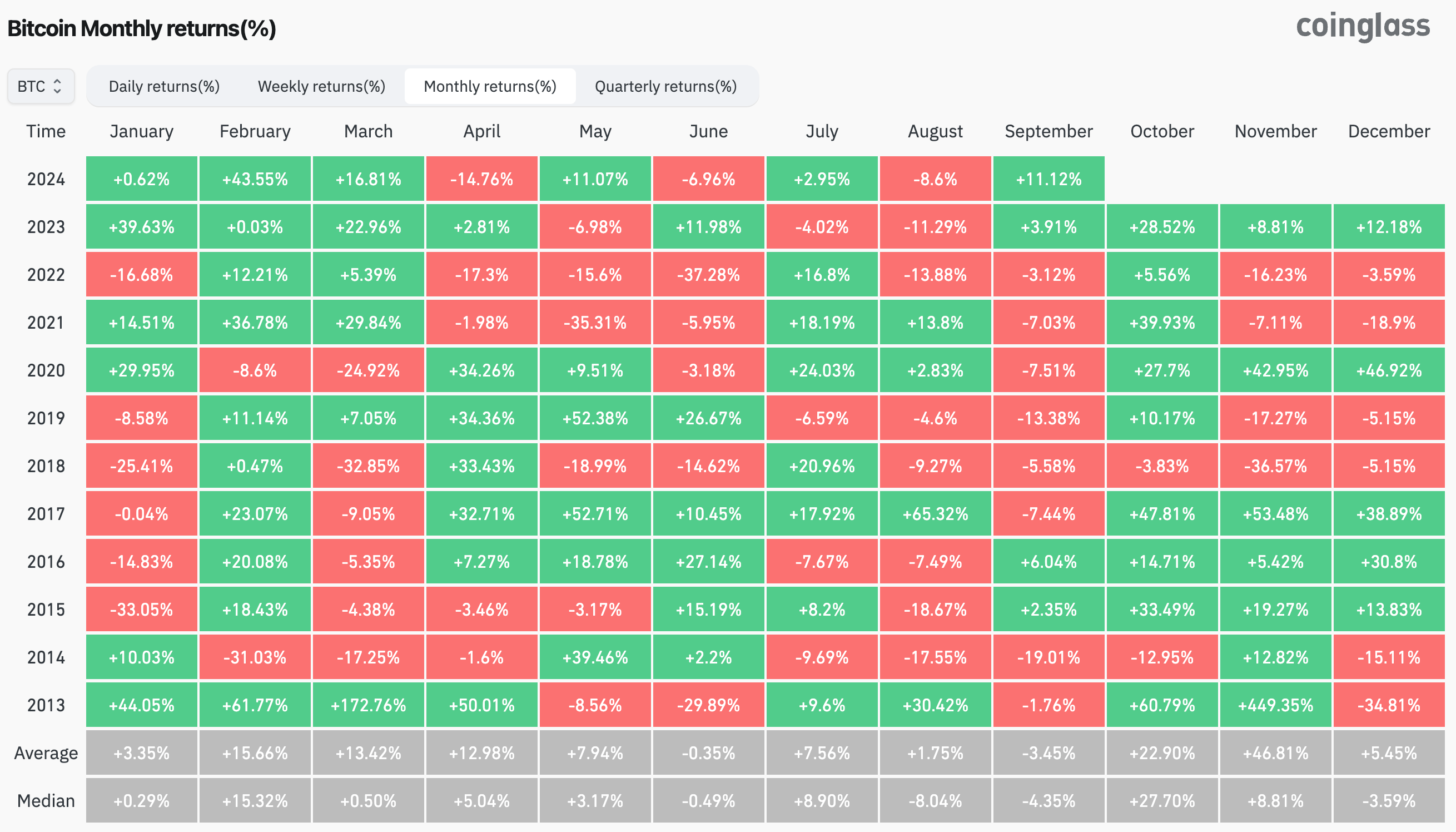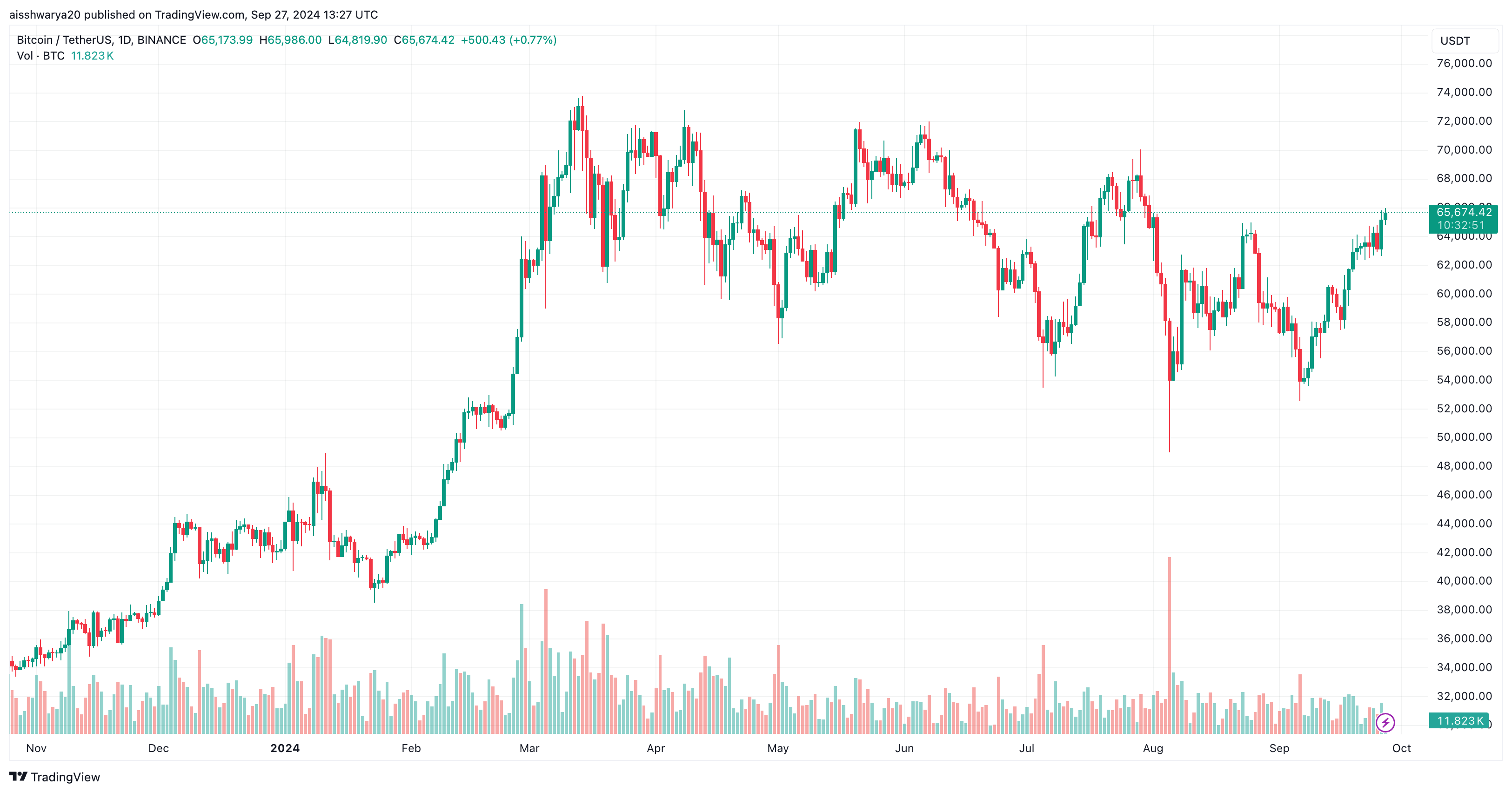Bitcoin (BTC) is set to achieve its best September in a decade, climbing above $65,000. This unusual price growth can be linked to several significant factors.
Factors Contributing to Bitcoin’s Remarkable September Growth
Traditionally, September has been the weakest month for BTC regarding price performance. However, the leading cryptocurrency is on course to record its highest September in at least ten years, spurred by various macroeconomic factors.
Related Reading
On September 18, the US Federal Reserve (Fed) commenced its interest rate reduction cycle for the first time in four years, cutting rates by 50 basis points (bps) to address slowing inflation and rising unemployment.
This rate cut has had an immediate impact on risk assets, including BTC, which has risen over 10% since the announcement. In comparison, Bitcoin’s average price drop in September over the last decade has been 3.45%, as indicated in the chart below from CoinGlass.

Following the Fed’s decision, both the European Central Bank (ECB) and the People’s Bank of China (PBoC) lowered borrowing rates to stimulate their economies, further pushing BTC’s price towards its prior highs.
Another significant factor is Bitcoin’s halving, which may now be influencing the asset’s pricing pattern. Earlier this year in April, Bitcoin’s halving reduced block rewards for miners from 6.25 BTC to 3.125 BTC.
Historical data suggests that halving events are typically bullish for Bitcoin due to the resulting scarcity of supply. For example, in May 2020, BTC price increased from around $8,900 before the halving to over $64,000 by April 2021 – an eightfold increase within approximately one year.
Meanwhile, US spot Bitcoin exchange-traded funds (ETFs) are experiencing increased interest from both retail and institutional investors, achieving $365.57 million in total net daily inflows on September 26, the highest since late July. Since their inception, the total net inflow for Bitcoin ETFs has reached $18.31 billion.
Cautious Optimism is Essential for Navigating the BTC Trend
While BTC seems to have overcome its typical September downturn, it’s crucial to note that the leading digital asset still needs to surpass specific critical price levels before it reaches a new all-time high (ATH).
Related Reading
As reported earlier, Bitcoin’s relative strength index (RSI) dropped below 80 on the monthly chart, indicating that the cryptocurrency’s bullish momentum might diminish after an active buying phase.
Additionally, a recent analysis from crypto exchange Bitfinex mentioned that despite Bitcoin’s recent rise, it needs to decisively break past a significant resistance level of $65,200 to maintain its upward trajectory. The good news for bulls is that BTC is currently stabilizing at $65,674, up 2% in the last 24 hours.

Featured image from Unsplash, charts from CoinGlass.com and Tradingview.com







